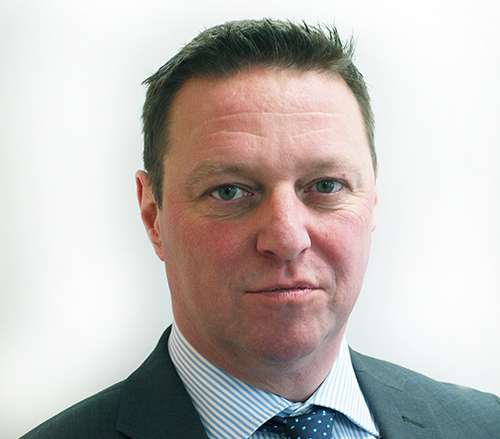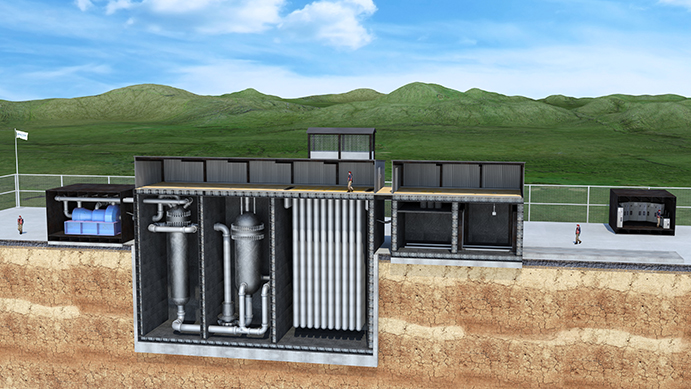 U-Battery’s general manager explains the thinking behind the latest generation of small modular reactors
U-Battery’s general manager explains the thinking behind the latest generation of small modular reactors
Small modular reactors (SMRs) are a key part of the UK’s nuclear future. A competition is currently running — somewhat behind schedule — to pick a design to receive more funding and be taken forward to a first-of-a-kind demonstrator and future plants, to serve both the UK and, it is hoped, a large export market.
SMRs contradict the previous thinking behind nuclear reactors, which can be crudely summarised as ‘bigger is better’. This economy-of-scale thinking has been proved numerous times in many sectors – basically, it does not cost twice as much to build a plant with twice the capacity — but in nuclear it doesn’t seem to have worked. As time has gone on, nuclear reactors and their associated hardware have become increasingly complex, with more and more safety systems being added, with the result that they are so complex to build that even the most prosperous countries are strained to finance them.
The thinking behind SMRs is that another mechanism for reducing costs, mass production in factories – which has been proved across several sectors — will unlock savings. Break down a plant into modular systems that can be made in a central factory, construct and test those systems in these controllable surroundings, then assemble them on site, and the whole thing will be cheaper.
Most of the SMR designs competing in the UK and, indeed, being developed elsewhere are scaled-down versions of the pressurised water reactor (PWR) technology that has dominated the mainstream nuclear market for decades. An exception is U-Battery, a micro-modular reactor design, distinct from larger SMRs, promoted by a company formed by a consortium of nuclear and other engineering firms, including Amec, Cammell Laird, Laing O’Rourke and URENCO. U-Battery general manager Steve Threlfall recently met The Engineer to discuss progress on the design and explain how it was suited to a different range of applications from those of other reactors.
In some ways, the U-Battery system harks back to an earlier generation of reactors. Rather than being cooled by water, it is a high-temperature gas-cooled reactor (HTGR).

“We use Triso fuel,” Threlfall said. These are spherical pellets with fissile uranium, in an oxide form, at their core, surrounded by layers of carbon and silicon-based ceramic. “There are two things you can do with that. You can put it into tennis-ball sized spheres in something called a pebble-bed reactor, which was developed in South Africa; or you can do what we do, which is to use a prismatic block design.”
In this, he explained, Triso particles are embedded into pellets called compacts, 39mm x 26mm, which can be assembled into something like conventional nuclear fuel rods. These then go into the core, which is assembled from an array of 24 hexagonal graphite blocks 80cm high — the prismatic blocks of the name. These are pierced with holes that run axially up and down the reactor. Some of these holes contain fuel, some control rods, and others allow the coolant gas — helium — to circulate. Rather than boil water to create steam, the hot helium goes into a heat exchanger, warming a secondary coolant that expands, driving it around its circuit.
“It’s nitrogen in the secondary circuit, and that blows a standard turbine around,” Threlfall said. “We use nitrogen because it’s as close to air as you can get, which means we can use a standard off-the-shelf turbine. It helps keep the economics in good shape.
“There are very few actual nuclear components; it’s just those graphite blocks, the fuel itself, the pressure vessel and the heat exchanger. Everything else is standard equipment like you’d find in any conventional gas-fired power station. We keep it really simple.”
An advantage of this type of reactor is that all the fission breakdown products are kept
inside the Triso particle, which, unlike the fuel in an SMR, cannot melt if coolant in lost.
“If you take out the control rods and let the helium escape, the temperature will go up from the operating temperature, 700°C, to about 1,100°C — and the fuel is proven safe up to 1,600°C. The graphite expands, the neutrons escape and it shuts itself down,” Threlfall said. “Prof Tim Abram of Manchester University, who designed this type of reactor, has sat on a Triso reactor in China with the safety systems turned off with no ill effects.”
A long history
Triso, though not currently in use with commercial reactors, has a long history. “Triso fuel has been under test in the US for 13 years, and before that it was used in the UK at the Dragon reactor; it’s Technology Readiness Level 9,” Threlfall said. “It’s performed way better than anything we’d need.”
Triso is not currently used because it is best suited to co-generation of heat and power, rather than the pure power generation for which SMRs are optimised, which has been the dominant paradigm for using nuclear. Now that the use of fossil fuels for heating is receiving more scrutiny, U-Battery believes that Triso, which can provide both heat and power with no carbon emissions, is a technology whose time has come.
“It hasn’t been done before because we’re trying to address this different market where nuclear hasn’t been before,” Threlfall said.
Although U-Battery is in the UK’s SMR competition, it has an eye on other markets: two in particular. “There’s interest in the UK, Canada and Poland. Ideally we’d like to do all three simultaneously but things work at different speeds.”
In Canada, Threlfall explained, U-Battery units could serve more than 300 remote communities, many of which are involved in mining and based around the Hudson Bay and Arctic Circle. “Today they run diesel generators; they’re dirty, not so reliable and incredibly expensive to run because of the cost of getting diesel to these places on ice roads or by air.” A single-reactor U-Battery plant, providing 10MW of heat and up to 4MW of electricity, would be ideal for communities of around 2,000 people, Threlfall said.
The situation in Poland is slightly different. “There is a great interest in Poland to replace boilers on existing industrial sites with a nuclear heat source; to replace coal or gas from Russia and improve their energy independence.”
The design for U-Battery has yet to reach a working prototype, Threlfall admits. “Over the past 12 months industrial partners conducted a two-stage detailed study of the costs including fuel, construction, licensing, training and commissioning costs,” he said. This yielded some pleasant surprises.
“We went initially to Sheffield Forgemasters for the pressure vessel and they said: ‘Actually, it’s so thin and small that you wouldn’t really want to forge it; you’re much better off fabricating it.’ So we went to Outokumpu in Sheffield and they did some costings for a welded pressure vessel in a nuclear-grade steel – so much cheaper than forging.”
The company now needs to expand its design team for front-end design and intends to go straight to building a first-in-class plant rather than prototyping.
Because of the simplicity of the U-Battery reactor, Threlfall believes it could be in operation before any SMR-based designs, even in the UK, where other partners in the company are bringing their expertise to the task.
“We’re aiming for a mid-2020s start-up for our first-of-a-kind plant,” he said. “And we’ve also had interest from India.”




Report highlights significant impact of manufacturing on UK economy
Note to Evil Villain/Dave 2020. Thatcher was PM for _11_ years, from 1979 to 1990 so no one under the age of 34 was even born when she left office....